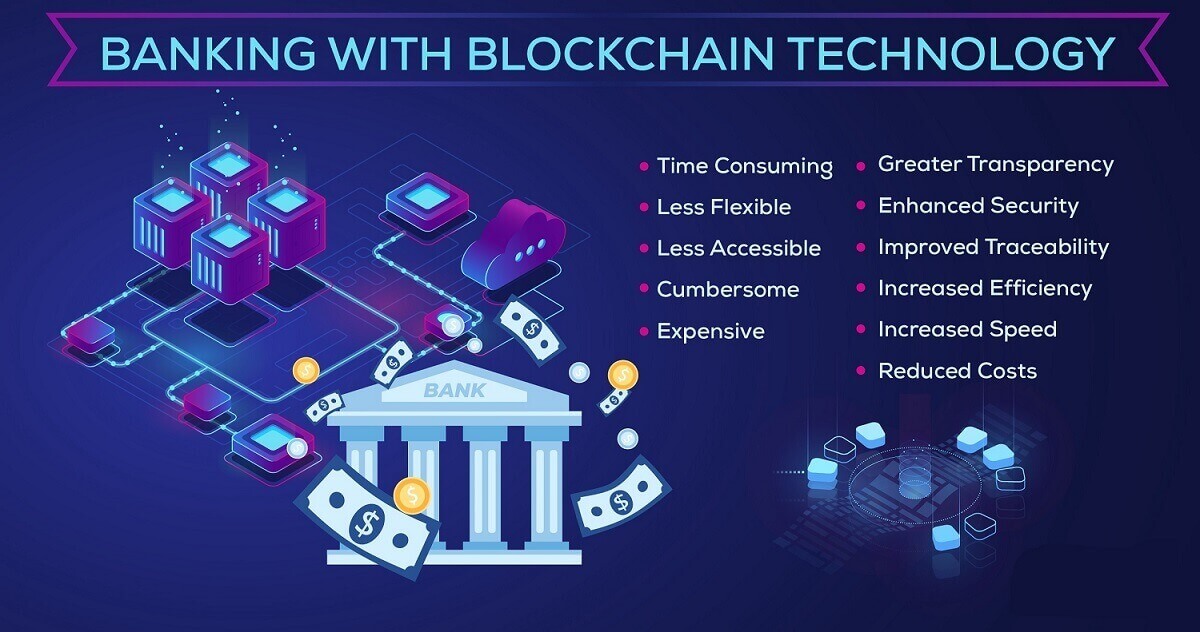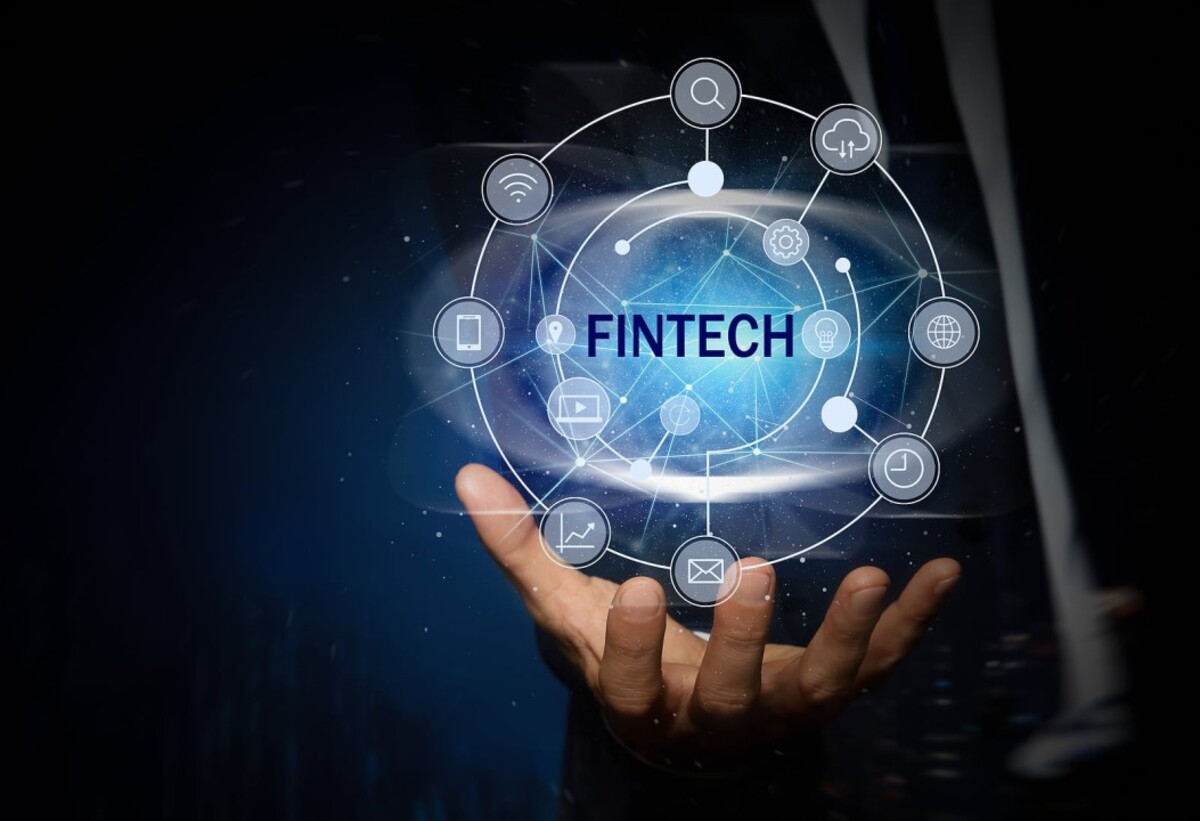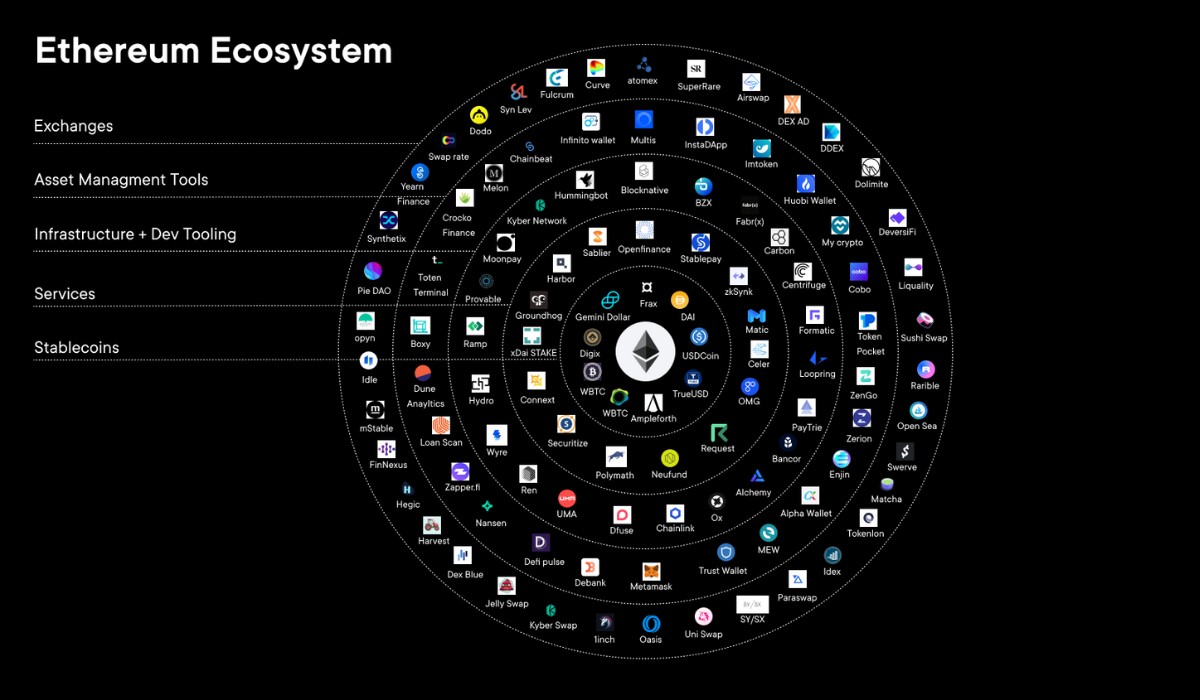Introduction
Welcome to the world of trade finance, an essential aspect of global commerce that has been plagued by inefficiencies, delays, and lack of transparency for decades. However, there is a disruptive technology that has the potential to transform the trade finance industry and revolutionize the way businesses conduct international trade, and that technology is blockchain.
Blockchain, often associated with cryptocurrencies like Bitcoin, is a decentralized digital ledger that securely records and verifies transactions across multiple computers. Its unique features of transparency, immutability, and distributed consensus make it a powerful tool for revolutionizing various industries, including trade finance.
Traditionally, trade finance has been burdened by complex and time-consuming processes, including documentation, verification, and settlement. These processes involve multiple parties, including exporters, importers, banks, and insurance companies, leading to a lack of trust and transparency. In addition, the manual handling of documents and the use of outdated systems result in high costs and increased risk of fraud.
However, with the introduction of blockchain technology in trade finance, these challenges can be overcome. By leveraging the unique characteristics of blockchain, such as increased trust and transparency, streamlined processes, enhanced security, and reduced costs, the trade finance industry can experience a significant transformation.
In this article, we will dive deeper into how blockchain can revolutionize trade finance by addressing the current challenges, exploring the benefits it brings, and discussing real-life examples of its successful implementation. We will also take a peek into the future of trade finance with blockchain and the potential for further innovation.
So, buckle up and get ready to explore the exciting world of blockchain-powered trade finance!
What is Blockchain?
Blockchain is a revolutionary technology that is changing the way we store, verify, and transfer data. At its core, blockchain is a decentralized digital ledger that records transactions across multiple computers, ensuring transparency, security, and immutability.
Unlike traditional databases that are centralized and controlled by a single entity, blockchain operates on a distributed network of computers, known as nodes. Each node has a copy of the entire blockchain, and any changes to the ledger require consensus from the majority of nodes. This decentralized nature of blockchain eliminates the need for intermediaries, making transactions faster, more efficient, and less prone to manipulation.
The key feature of blockchain is its ability to create a chain of blocks, where each block stores a set of transactions or data. Every block contains a unique identifier, known as a hash, which is calculated based on the data it contains and the hash of the previous block in the chain. This creates a permanent and verifiable link between blocks, ensuring the integrity and immutability of the data.
Blockchain technology utilizes cryptography to secure transactions and provide authentication. Each transaction is digitally signed using cryptographic keys, ensuring that only authorized parties can access and modify the data. This level of security, combined with the transparency and immutability of the blockchain, makes it a powerful tool for various applications, including trade finance.
Moreover, blockchain technology employs a consensus mechanism to validate and verify transactions. The most common consensus mechanism is called “proof of work,” where participants, known as miners, compete to solve complex mathematical problems to validate transactions and add them to the blockchain. This ensures that the majority of the network agrees on the validity of transactions, preventing fraud and double-spending.
In summary, blockchain technology is a distributed and decentralized system that enables secure, transparent, and tamper-resistant transactions. Its innovative features have the potential to revolutionize industries such as trade finance by enhancing trust, streamlining processes, and reducing costs.
The Current Challenges in Trade Finance
Trade finance is a critical function that facilitates global commerce and enables businesses to engage in international trade. However, the industry is riddled with numerous challenges that impede efficiency, transparency, and accessibility. Understanding these challenges is crucial in appreciating how blockchain technology can address them effectively.
One of the major challenges in trade finance is the complexity of documentation and the manual processing of paperwork. Trade transactions involve a plethora of documents, including purchase orders, invoices, shipping documents, and insurance certificates. The reliance on physical documents and manual verification processes leads to delays, errors, and increased costs. Discrepancies in document processing can result in payment delays or even the rejection of the transaction.
Another significant challenge is the lack of trust and transparency among the multiple parties involved in trade finance. Traditional trade finance heavily relies on intermediaries, such as banks, to facilitate transactions and provide financial services. However, this reliance introduces additional costs, delays, and a lack of transparency. Importers, exporters, and other stakeholders often face difficulty in tracking the progress of their trade finance transactions, resulting in a lack of trust and increased risks.
Additionally, trade finance has long been seen as a domain accessible only to large corporations and established businesses. Small and medium-sized enterprises (SMEs) often encounter difficulties in obtaining trade financing due to stringent requirements, limited credit history, and lack of collateral. This limited access to trade finance hampers the growth potential of SMEs and restricts their ability to participate fully in global trade.
Furthermore, the existing trade finance systems are susceptible to fraud and increased compliance risks. The manual handling of documents and the lack of transparency create opportunities for fraudulent activities, such as the submission of forged documents or the manipulation of data. The high risk of fraud not only impacts the financial institutions but also undermines trust within the trade finance ecosystem.
These challenges in trade finance have long been a bottleneck in the global economy. Fortunately, the emergence of blockchain technology offers promising solutions to overcome these hurdles. By leveraging the unique features of blockchain, such as increased trust, transparency, and efficiency, trade finance can be transformed into a more streamlined, secure, and accessible process.
How Blockchain Solves These Challenges
Blockchain technology holds tremendous potential to address the challenges faced in trade finance and revolutionize the industry. Let’s explore how blockchain can effectively solve these challenges:
1. Increased Trust and Transparency: Blockchain technology ensures transparency by providing a shared, immutable ledger that all parties can access and verify. Through smart contracts, trade transactions can be automated, and the terms and conditions can be encoded into the blockchain. This eliminates the need for intermediaries and provides real-time visibility into the progress of the transaction. All participants can track the status of the trade finance process, reducing delays, and enhancing trust among parties.
2. Streamlined Processes and Reduced Costs: Blockchain simplifies the complex documentation process in trade finance. Instead of relying on physical documents, all relevant information can be stored on the blockchain, including invoices, bills of lading, and certificates of origin. This eliminates the need for manual verification and reduces the administrative burden on multiple parties. Additionally, by removing intermediaries, blockchain streamlines the process and reduces costs associated with trade finance transactions.
3. Faster and Efficient Trade Settlements: Traditional trade finance transactions often involve multiple intermediaries and complex settlement processes. With blockchain, transactions can be settled in real-time or near real-time, eliminating the need for lengthy processing times. Smart contracts can automatically trigger payments once predefined conditions are met, reducing the time and effort required for manual settlement procedures.
4. Enhanced Security and Reduced Fraud: The decentralized nature of blockchain technology ensures better security and reduces the risk of fraud. Blockchain uses cryptography to secure transactions and prevents unauthorized access or tampering. Every transaction on the blockchain is verified and recorded, providing a transparent and auditable trail of activities. This helps mitigate the risk of fraudulent practices, such as document forgery or double-spending.
5. Improved Access to Trade Finance for Small Businesses: Blockchain technology has the potential to democratize trade finance and make it more accessible to small and medium-sized enterprises (SMEs). By utilizing blockchain, SMEs can showcase their transaction history, creditworthiness, and supply chain information in a transparent and immutable manner. This increases their chances of obtaining trade financing and participating in global trade on an equal footing with larger corporations.
By leveraging the features of blockchain technology, trade finance can be transformed into a more efficient, transparent, and inclusive process. These solutions not only benefit individual businesses but also contribute to the overall growth of the global economy.
Increased Trust and Transparency
One of the significant advantages that blockchain brings to trade finance is increased trust and transparency among the various parties involved in a transaction. Traditional trade finance processes often suffer from a lack of transparency and trust due to the involvement of multiple intermediaries and manual paper-based systems. Blockchain technology addresses these issues by providing a decentralized and transparent ledger that all participants can access and verify.
With blockchain, trade transactions are recorded in a shared ledger that is visible to all authorized participants. Every transaction is stored in a “block” and linked to the previous block through a unique cryptographic hash. This chain of blocks creates a permanent and unchangeable record of all transactions, ensuring the integrity of the data and eliminating the risk of manipulation or fraud.
Transparency is further enhanced through the use of smart contracts, which are self-executing contracts with the terms and conditions encoded into the blockchain. These contracts automatically execute predefined actions once the specified conditions are met. For example, a smart contract could release payment to the exporter once the goods have been delivered and the required documentation is verified. This automation reduces the need for manual intervention and minimizes the risk of disputes or delays.
The increased transparency provided by blockchain allows all parties involved in the trade finance process to have real-time visibility into the progress of the transaction. Importers, exporters, banks, and other stakeholders can track the status of the documents, payments, and shipments at any given time. This transparency enhances trust and reduces the risk of misunderstandings or disputes, as all parties have access to the same information and can verify the authenticity of the data.
Moreover, the immutable nature of blockchain ensures that once a transaction is recorded, it cannot be altered or deleted. This decentralization and immutability provide an auditable trail of activities, making it easier to detect and prevent fraud. Any attempts to tamper with or manipulate the data would require the consensus of the majority of participants, which is highly unlikely to occur in a decentralized network. This increased security and trust are particularly crucial in trade finance, where the potential for fraudulent activities is high.
In summary, blockchain technology enhances trust and transparency in trade finance by providing a decentralized and transparent ledger. The use of smart contracts and the immutability of the blockchain ensure that all parties involved have real-time visibility into the transaction process and can verify the authenticity of the data. This increased trust and transparency contribute to more secure, efficient, and reliable trade finance operations.
Streamlined Processes and Reduced Costs
Blockchain technology offers significant opportunities to streamline processes and reduce costs in trade finance. Traditionally, trade finance has been burdened by complex and time-consuming documentation processes, manual verification, and the involvement of multiple intermediaries. Blockchain can address these challenges by introducing automation, digitization, and eliminating the need for intermediaries.
One of the key benefits of blockchain technology is the ability to digitize and store trade-related documents on the blockchain. Instead of relying on physical paperwork that needs to be handled, verified, and transported, all relevant documents can be stored securely on the blockchain. This eliminates the need for manual document processing and significantly reduces the time and effort required to complete trade finance transactions.
By digitizing trade documents, blockchain enables seamless sharing and verification among all parties involved in the transaction. Each participant can access the necessary documents on the blockchain in a tamper-proof and transparent manner. This eliminates the need for manual document exchanges, reduces the risk of errors or discrepancies, and speeds up the overall process.
Furthermore, blockchain technology can automate trade finance processes through the use of smart contracts. Smart contracts are self-executing contracts with the terms and conditions predefined and encoded into the blockchain. These contracts automatically trigger actions based on predefined rules and conditions. For example, once the necessary documents are verified, a smart contract can automatically release payment to the exporter or initiate the shipment of goods.
Automation through smart contracts not only reduces the time required for manual processing but also minimizes the risk of human error and miscommunication. By removing the need for manual intervention and streamlining the process, blockchain technology can expedite the trade finance process significantly.
In addition to streamlining processes, blockchain technology can also reduce costs associated with trade finance. The elimination of manual document handling, verification, and reconciliation reduces administrative costs and the potential for human error. With blockchain, there is less reliance on intermediaries, such as banks, which reduces transaction fees and processing costs.
Moreover, the increased transparency provided by blockchain reduces the need for costly audits and reconciliations. All authorized participants can access and verify the information stored on the blockchain, eliminating the need for redundant verification processes by multiple parties involved in the transaction. This reduces duplication of efforts, improves efficiency, and ultimately lowers costs.
The streamlining of processes and reduction of costs through blockchain technology make trade finance more accessible and efficient for businesses of all sizes. Small and medium-sized enterprises (SMEs), in particular, can benefit from reduced administrative burdens and lower costs, providing them with equal opportunities to participate in global trade.
Faster and Efficient Trade Settlements
Blockchain technology offers the potential to revolutionize trade finance by enabling faster and more efficient trade settlements. Traditional trade settlements often involve multiple intermediaries, manual processes, and lengthy processing times. However, blockchain can streamline these settlements, reducing the time and effort required to complete transactions.
One of the main reasons for slower trade settlements is the reliance on manual processes and paper-based documentation. With blockchain, these processes can be digitized and automated. Trade documents, including invoices, bills of lading, and certificates of origin, can be stored securely on the blockchain, eliminating the need for physical paperwork. This digitization ensures faster access to documents, reduces the risk of errors, and speeds up the overall settlement process.
Furthermore, blockchain technology enables the use of smart contracts to automate settlement procedures. Smart contracts are self-executing contracts with the terms and conditions predefined and encoded into the blockchain. Once the predefined conditions of the contract are met, such as the delivery of goods or the verification of documents, the smart contract automatically triggers the settlement process.
For example, when a shipment of goods arrives at the port, sensors integrated with the blockchain can trigger a smart contract that automatically releases payment to the exporter. This eliminates the need for manual verification and approval, significantly reducing the time required for settlement.
In addition to automation, blockchain offers the potential for near real-time settlement. Traditional settlements often involve delays due to the involvement of multiple intermediaries who need to review and approve transactions. With blockchain, transactions can be settled in real-time or near real-time, as they are recorded and validated on a decentralized network of computers.
By removing the need for intermediaries and speeding up the settlement process, blockchain technology helps mitigate counterparty risks. Unlike traditional settlements where there may be delays or disputes, blockchain provides immediate confirmation and immutability of transactions. This enhances trust among parties and reduces the risk of potential disagreements or non-payment.
Moreover, faster and efficient trade settlements facilitated by blockchain technology have significant implications for cash flow management and working capital. Businesses can receive payment for goods and services more quickly, allowing them to allocate funds and plan their operations more effectively. This accelerated settlement process can improve the overall liquidity and financial stability of businesses engaged in global trade.
In summary, blockchain technology offers the potential for faster and more efficient trade settlements. Through the digitization of documents, automation through smart contracts, and the elimination of intermediaries, blockchain streamlines the settlement process, reducing delays, increasing transparency, and improving liquidity. This transformation contributes to a more seamless and secure trade finance ecosystem.
Enhanced Security and Reduced Fraud
Security and fraud prevention are critical aspects of trade finance, and blockchain technology provides enhanced security measures that significantly reduce the risk of fraud. The decentralized and immutable nature of blockchain ensures the integrity and authenticity of trade transactions, making it highly secure and resistant to fraudulent activities.
One of the key security features of blockchain is its encryption and cryptographic algorithms. Transactions recorded on the blockchain are encrypted and can only be accessed by authorized parties with the corresponding private keys. This cryptographic security ensures that the transaction data remains confidential and cannot be tampered with or altered by unauthorized individuals.
Additionally, blockchain offers a transparent and auditable trail of transactions, making it easier to detect and prevent fraud. The immutable nature of the blockchain ensures that once a transaction is recorded, it cannot be modified or deleted, providing an accurate and tamper-proof record of all activities. This feature makes it challenging for fraudsters to manipulate data or forge documents, as any inconsistencies would be easily identifiable and verifiable.
Unlike traditional trade finance systems, which rely on manual document handling and verification, blockchain provides a more secure and efficient way of managing trade-related documents. Rather than relying on physical copies that can be lost, stolen, or forged, all documents are stored on the blockchain in a tamper-proof manner. The decentralized nature of the blockchain ensures that multiple copies of the data exist across multiple nodes, making it highly resilient to attacks or data loss.
Furthermore, the use of smart contracts in blockchain technology adds an extra layer of security and reduces the risk of fraud. Smart contracts are self-executing contracts with predefined terms and conditions encoded on the blockchain. These contracts automatically execute actions once the specified conditions are met. The use of smart contracts reduces the need for manual intervention, minimizing the opportunity for human error or manipulation.
Another significant aspect of enhanced security in blockchain technology is the consensus mechanism. In a blockchain network, transactions are validated and verified by a majority of participants before being added to the blockchain. This consensus mechanism prevents fraudulent transactions from being included in the blockchain, as the majority of participants would reject fraudulent or malicious activities. This decentralized validation process ensures the integrity and security of the trade finance ecosystem.
Overall, blockchain technology provides enhanced security measures that greatly reduce the risk of fraud in trade finance. The encryption and cryptographic algorithms, transparent and tamper-proof records, use of smart contracts, and consensus mechanisms all strengthen the security of trade transactions. By leveraging these security features, blockchain technology creates a more trustworthy and secure environment for global trade.
Improved Access to Trade Finance for Small Businesses
Blockchain technology has the potential to revolutionize the accessibility of trade finance, particularly for small and medium-sized enterprises (SMEs). Traditionally, SMEs have faced challenges in obtaining trade financing due to stringent requirements, limited credit history, and a lack of collateral. However, blockchain technology offers a solution that can level the playing field and provide SMEs with equal opportunities to participate in global trade.
Blockchain enables SMEs to showcase their transaction history, creditworthiness, and supply chain information in a transparent and immutable manner. By storing data on the blockchain, SMEs can create a verifiable record of their trade activities, including successful transactions, prompt payments, and reliable shipment records. This transparent transaction history and verified data can help build trust and credibility among potential lenders and investors.
Furthermore, blockchain technology allows for the creation of decentralized finance (DeFi) platforms, which utilize blockchain-based digital assets and smart contracts to provide financial services. These platforms can offer alternative funding options, such as peer-to-peer lending or crowdfunding, by leveraging blockchain’s transparency and security features. SMEs can access trade financing directly through these platforms, bypassing traditional financial institutions and their stringent requirements.
The use of smart contracts within blockchain technology also simplifies and automates the trade financing process for SMEs. Smart contracts can automatically trigger payment releases, reducing the need for heavy documentation and providing immediate access to funds. This automation streamlines the process, lowering administrative costs and making trade financing more accessible, efficient, and affordable for SMEs.
Moreover, the decentralized nature of blockchain eliminates the need for intermediaries and empowers SMEs to connect directly with potential trade partners, lenders, or investors. Blockchain-based trade finance platforms can facilitate direct peer-to-peer transactions, match SMEs with suitable financing options, and enable secure and transparent trade agreements.
Another benefit of blockchain technology is the potential to tokenize assets. Through tokenization, physical assets such as inventory or equipment can be represented digitally on the blockchain. SMEs can leverage these digital assets as collateral for trade financing, providing an alternative option for businesses that lack traditional forms of collateral.
With improved access to trade finance, SMEs can expand their global reach, enter new markets, and engage in more extensive trade activities. The democratization of trade finance through blockchain technology not only benefits SMEs but also stimulates economic growth by fostering innovation and entrepreneurship.
In summary, blockchain technology has the potential to bridge the trade finance gap for small businesses. Through verifiable transaction histories, decentralized finance platforms, automation through smart contracts, and asset tokenization, SMEs can access trade financing more easily and participate on an equal footing with larger corporations in the global trade arena.
Real-Life Examples of Blockchain in Trade Finance
Blockchain technology is already being implemented in various real-life trade finance scenarios, demonstrating its potential to revolutionize the industry. Let’s explore a few notable examples:
1. we.trade: we.trade is a blockchain-based trade finance platform developed by a consortium of major banks. It leverages blockchain technology to streamline and secure trade finance processes, specifically for small and medium-sized enterprises (SMEs). The platform enables SMEs to create and manage digital trade contracts, track the progress of their transactions, and access financing from participating banks. By utilizing smart contracts and blockchain’s transparency, we.trade enhances trust and efficiency in trade finance.
2. TradeLens: TradeLens, a collaboration between IBM and Maersk, is a blockchain platform designed to digitize and streamline the global supply chain process. It enables all stakeholders, including shipping carriers, freight forwarders, and customs authorities, to securely and transparently share information on a decentralized ledger. By providing end-to-end visibility of the supply chain, TradeLens reduces paperwork, eliminates delays, and enhances trust among participants, leading to more efficient trade finance processes.
3. Voltron: Voltron is a blockchain-based platform that aims to digitize and automate the creation and exchange of trade finance documents. It enables banks, exporters, and importers to access and verify transactional data securely and efficiently. Voltron eliminates the need for manual document handling and reduces the risk of fraud or disputes. By leveraging blockchain technology, Voltron improves the speed, efficiency, and security of trade finance operations.
4. Marco Polo: Marco Polo is a trade finance initiative that utilizes blockchain technology to optimize financial supply chain processes. The platform enables real-time data sharing and collaboration between financial institutions and corporates, streamlining processes such as purchase order financing, receivables discounting, and risk mitigation. The secure and transparent nature of blockchain-based transactions in Marco Polo enhances trust, reduces processing time and costs, and improves liquidity in global trade finance.
5. Komgo: Komgo is a blockchain-based platform focused on commodity trade finance. By digitizing and automating trade finance processes, Komgo increases efficiency and enhances transparency and security. The platform facilitates the creation and execution of smart contracts, verifies the authenticity of documents, and reduces the risk of fraud in commodity trading. By leveraging blockchain, Komgo simplifies trade finance transactions and enables faster, more secure, and cost-effective financing solutions.
These real-life examples highlight the successful implementation of blockchain technology in trade finance. By leveraging blockchain’s transparency, immutability, and automation features, these platforms streamline processes, enhance trust, reduce costs, and revolutionize the way businesses engage in global trade.
The Future of Trade Finance with Blockchain
The future of trade finance looks promising with the continued integration of blockchain technology. As the technology evolves and matures, it holds the potential to bring even more transformative changes to the industry. Here are some key aspects that highlight the future of trade finance with blockchain:
1. Interoperability and Standardization: Currently, there is a multitude of blockchain platforms and initiatives in trade finance. The future will likely see increased collaboration and interoperability among these platforms, enabling seamless information sharing and data exchange across the entire trade finance ecosystem. Interoperability will foster standardization, making it easier for businesses, financial institutions, and governments to adopt and integrate blockchain solutions into their trade finance operations.
2. Integration of Internet of Things (IoT) and Artificial Intelligence (AI): The combination of blockchain with IoT and AI technologies holds vast potential for trade finance. IoT devices can provide real-time data on the location, condition, and supply levels of goods, which can be securely recorded on the blockchain. AI algorithms can analyze this data, enabling automation, risk assessment, and predictive analytics for trade finance processes. This integration will enhance transparency, efficiency, and decision-making in trade finance operations.
3. Tokenization of Assets and Digital Currencies: The future of trade finance may see an increase in the tokenization of assets, where physical assets, such as commodities or real estate, are represented digitally on the blockchain. These digital assets can be traded efficiently, enabling fractional ownership and enhancing liquidity. Additionally, blockchain-based digital currencies, such as stablecoins, may become more widely adopted and integrated into trade finance transactions, eliminating the need for traditional fiat currencies and reducing the associated costs and complexities.
4. Enhanced Supply Chain Management: Blockchain technology can provide end-to-end visibility and traceability of goods throughout the supply chain. With the integration of blockchain, businesses can securely track the movement, origin, and quality of goods in real-time. This increased transparency and visibility assist in mitigating supply chain risks, ensuring compliance with regulations, and enhancing sustainability. Improved supply chain management through blockchain brings increased efficiency, reduced costs, and improved risk management in trade finance.
5. Robust Security and Data Privacy: Future developments in blockchain technology will focus on further enhancing security and data privacy features. Innovations such as zero-knowledge proofs and privacy-preserving techniques will enable businesses to protect sensitive information while still benefitting from the transparency and automation of blockchain. As regulations around data privacy become more stringent, blockchain will need to evolve to offer robust privacy features while maintaining its core benefits in trade finance.
Overall, the future of trade finance with blockchain holds tremendous potential for efficiency, transparency, and inclusivity. As the technology matures and stakeholders continue to embrace its benefits, we can expect to see accelerated adoption, standardization, and integration with emerging technologies. Through these advancements, blockchain will reshape the trade finance landscape, providing a more secure, efficient, and accessible environment for businesses to engage in global trade.
Conclusion
Blockchain technology has the potential to revolutionize the trade finance industry by addressing its current challenges and transforming traditional processes. By leveraging the features of blockchain, such as increased trust and transparency, streamlined processes, enhanced security, and reduced costs, trade finance can become more efficient, secure, and accessible to businesses of all sizes.
With blockchain, trade finance processes can be digitized, automated, and made more transparent. The use of smart contracts enables the automation of trade settlements, reducing the need for manual intervention and speeding up transactions. In addition, the decentralized nature of blockchain eliminates the need for intermediaries, leading to reduced costs and faster processing times.
Increased trust and transparency are significant benefits of blockchain technology. All transaction details are recorded on a shared, immutable ledger, providing real-time visibility and enhancing trust among the parties involved. The transparent nature of the blockchain also reduces the risk of fraud and increases the security of trade finance transactions.
Furthermore, blockchain technology offers improved access to trade finance, particularly for small and medium-sized enterprises (SMEs). Through verifiable transaction histories, decentralized finance platforms, and automated processes, SMEs can overcome traditional barriers and participate more actively in global trade.
Real-life examples such as we.trade, TradeLens, Marco Polo, and Komgo demonstrate the successful implementation and benefits of blockchain technology in trade finance. These platforms streamline processes, enhance trust, reduce costs, and improve the efficiency of trade finance operations.
The future of trade finance with blockchain holds even greater potential. Interoperability, integration with IoT and AI, asset tokenization, and enhanced supply chain management are among the areas where blockchain will continue to make significant advancements. As blockchain technology matures, it will reshape the trade finance landscape, providing a more secure, efficient, and inclusive environment for businesses to engage in global trade.
In summary, blockchain technology offers tremendous opportunities to revolutionize the trade finance industry. By leveraging its unique features, trade finance can become more transparent, efficient, and cost-effective. Businesses, financial institutions, and governments that embrace blockchain have the chance to unlock significant value and transform the way international trade is conducted.

























